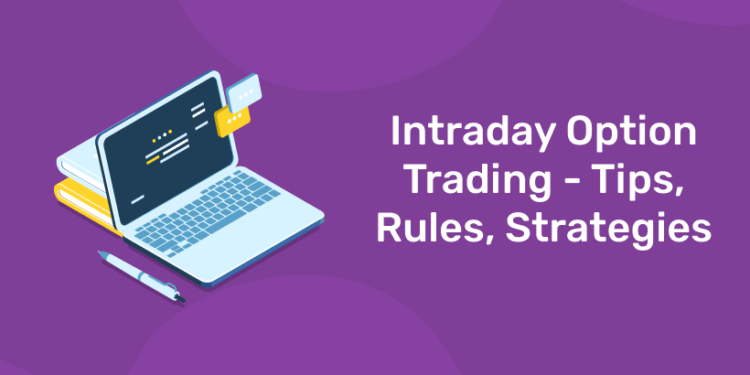Table of Contents
Intraday trading is about buying and selling shares on the same day before market closing. It is also known as day trading. The main objective of intraday traders is to earn quick short-term profits.
Intraday trading is riskier than investing in the regular stock market. It is important, especially for beginners, to understand the basics of such trading to avoid losses. Conventionally, one should not risk over two per cent of their total trading capital on a single trade.
Before delving into intraday trading, you should be aware of the basic and best strategies to avoid any kind of losses and gain many profits in a shorter span. Many intraday traders don’t have proven day trading strategies. Hence, they tend to lose their money. Let us have a look at some of the tips and strategies that can help in maximizing profits from intraday trading.
Learn Stock Marketing with Share Trading Expert! Explore Here!
Intraday Trading Tips and Strategies
Research Your Target Companies Thoroughly
Once you have identified the stocks to trade, make a thorough research about them. Intraday traders need to have a hang of what the company is doing and how it is performing. You should have an idea about corporate events like acquisitions, mergers, bonus issues, stock splits, and dividend payments. You should analyze them in order to help you make better trading decisions.
Choose Liquid Stocks
Liquidity is the most important criterion you must check before selecting a particular stock to trade in. Since intraday trading deals with buying and selling stocks on same day, there must be enough liquidity in the market in order to make profit. To achieve this, avoid small-cap and mid-cap stocks that may not be liquid enough. Stocks with high liquidity trade at huge volumes which allows intraday traders to buy or sell larger quantities easily. Experts also advice that instead of investing all your money on a single stock, you should diversify across a handful of stocks.
Set a Stop-Loss Level
Setting a small target and small stop loss is important in intraday trading. In a stock market, a share price may go up or down. So you must decide how much loss are you ready to bear if the trade goes against your position. In order to achieve this, you must set a stop-loss level. This will help you minimize the risk of heavy loss. For example, suppose you buy 20 shares of a company which is trading at Rs. 1000 per share by investing Rs. 20000. If the share price goes down to 900 per share you lose Rs. 2000. If you set a stop loss at Rs. 950, you lose only Rs. 1000.
Book Profit When the Target Is Achieved
In a stock market, prices rise and fall in matter of minutes. Set a target and book profit once the target is achieved. When prices keep rising, you might get tempted to wait until it further increases but remember not to fall in the trap. You must make trade decisions based on facts and strategies and not on how you feel a stock will perform.
Choose the Right Platform
Intraday traders make multiple transactions daily and accrue gains. Hence you need to choose the right platform that allows for quick decision-making, execution, and charges minimal brokerage. Generally, to execute an intraday trade, the intraday trade has to pay a brokerage which includes Securities Transaction Tax (STT), SEBI Regulatory Fee, Transaction Charges, Stamp Duty, and GST on brokerage. In order to minimize these charges an to ensure that they don’t eat upon your profit, choose the best platform.
Timing Is Crucial
Timing is one of the most important aspect in intraday trading. To accrue maximum profit, you must first learn how to make the right move at the right time. Study the market’s mood in the morning, noon, and close to closing. Many experts prefer taking an intraday position between noon and 1 pm. Avoid trading during the first hour, once the markets open.
Decide Entry and Exit Price
You should have a clear objective and should freeze the entry and exit price. This will help prevent you from falling prey to your emotions.
Use Daily Charts to analyze Time
Daily charts help you understand how different stocks are performing on the same day. Some of the popular daily charts used by traders include hourly charts, 15-minute charts, five-minute charts, and two-minute charts. You should learn how to read these day charts and interpret them correctly.
Master stock trading with us. Enroll now for a free demo!
Don’t Move Against the Market
Even with tons of experience, one may not be able to predict market movements. If the market moves against your expectations, it is important to exit your position to avoid huge losses.
Begin with Small Investments
It is easy to get carried away once you start making profits but remember that markets are volatile. You may end up losing all your investments. Hence its important to invest smaller amounts to ensure that you do not face heavy losses even if the markets collapse. In the beginning, you must keep the quantity very small. As you get hold of the trading rules and gain confidence, you can start to scale up the position.
Close all Open Positions
You may get tempted to keep your position open in case you didn’t achieve your target. This is not a good practice as you may be subject to overnight risks. Make sure to close all the open positions even if you are facing a loss.
Spend Time Studying the Market
Intraday trading is all about what you do in a day. You should be able to dedicate time to monitor the market movements from the time of it’s opening until closing. This will help you take the right call as and when needed.
Follow Intraday Trading Indicators
Intraday Trading indicators are beneficial as they help maximize returns. Do your research and follow the indicators. Choose an indicator that suits your trading setup.
These are some of the tips and strategies that can help you in intraday trading. Remember, there is no golden rule which will assure profit all the time. It’s only with practice that you’ll learn all the nuances of intraday trading. In intraday trading, the objective is to achieve smaller profits through trades. Stick to your trading strategies making tactical adjustments whenever required. Keep an eye on the market trend to make profits.
Start investing like a pro. Enroll in our Stock Market course!
Frequently Asked Questions (FAQs)
1: What is a stock?
How much capital does one need to start intraday trading?
You can start intraday trading with as small amount as Rs. 100. Once you gain momentum, you can scale up.
Which are the commonly used intraday trading indicators?
The commonly used intraday indicators are the Relative Strength Index (RSI), Average Directional Index (ADX), Moving Averages (MA), and Bollinger Bands.











